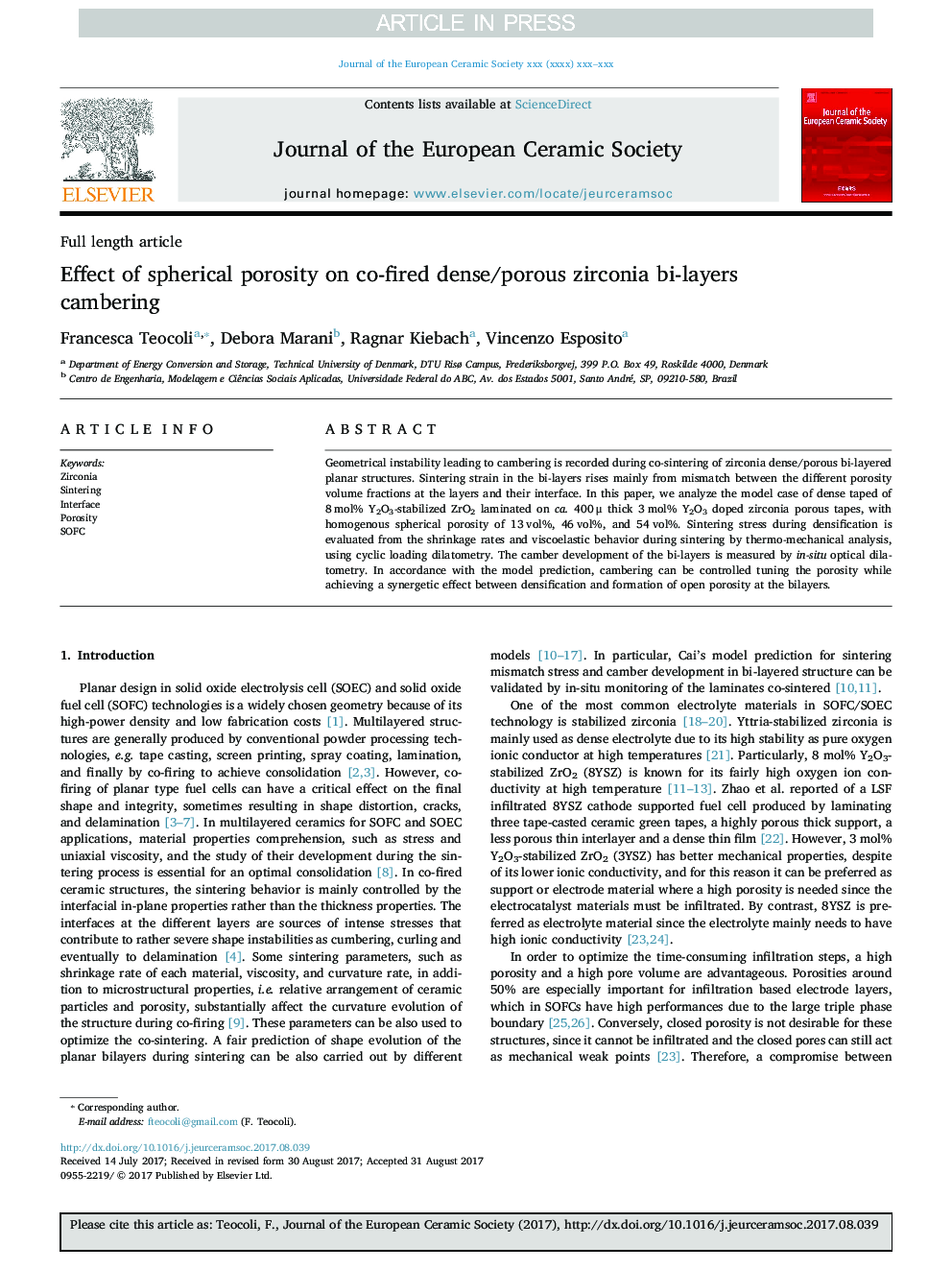| Article ID | Journal | Published Year | Pages | File Type |
|---|---|---|---|---|
| 5440232 | Journal of the European Ceramic Society | 2018 | 7 Pages |
Abstract
Geometrical instability leading to cambering is recorded during co-sintering of zirconia dense/porous bi-layered planar structures. Sintering strain in the bi-layers rises mainly from mismatch between the different porosity volume fractions at the layers and their interface. In this paper, we analyze the model case of dense taped of 8 mol% Y2O3-stabilized ZrO2 laminated on ca. 400 μ thick 3 mol% Y2O3 doped zirconia porous tapes, with homogenous spherical porosity of 13 vol%, 46 vol%, and 54 vol%. Sintering stress during densification is evaluated from the shrinkage rates and viscoelastic behavior during sintering by thermo-mechanical analysis, using cyclic loading dilatometry. The camber development of the bi-layers is measured by in-situ optical dilatometry. In accordance with the model prediction, cambering can be controlled tuning the porosity while achieving a synergetic effect between densification and formation of open porosity at the bilayers.
Related Topics
Physical Sciences and Engineering
Materials Science
Ceramics and Composites
Authors
Francesca Teocoli, Debora Marani, Ragnar Kiebach, Vincenzo Esposito,
